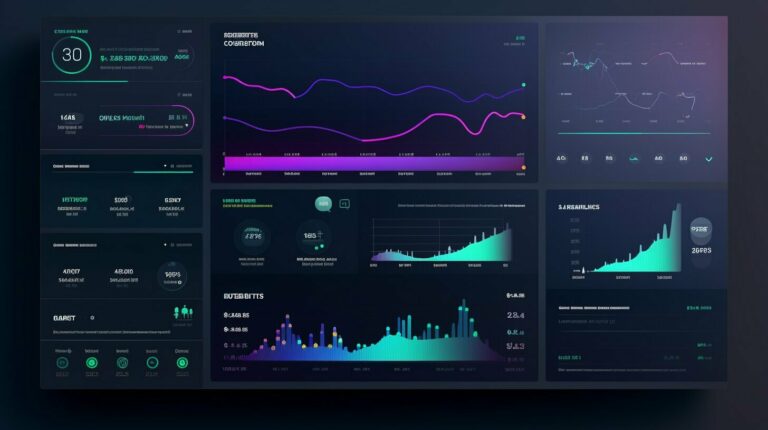If you’re looking for a powerful framework to build web applications, Node.js Express is an excellent choice. Express is a minimal and flexible Node.js web application framework that provides a robust set of features for web and mobile applications. In this guide, we’ll cover the basics of getting started with Express, creating and testing projects, working with middleware and routing, building APIs, and deploying your projects.
Node.js Express is designed to make building web applications straightforward. It’s lightweight, fast, and highly scalable, which makes it ideal for building everything from small, single-page applications to large, complex web platforms. With Express, you can create robust APIs, handle middleware, and route requests efficiently.
If you’re new to Express, don’t worry. This guide will walk you through everything you need to know to get started with this powerful framework. So, let’s dive in and explore the world of Node.js Express!
Key Takeaways
- Node.js Express is a powerful framework for building web applications.
- Express is lightweight, fast, and highly scalable, making it an excellent choice for everything from small, single-page apps to large, complex web platforms.
- With Express, you can easily create APIs, handle middleware, and route requests efficiently.
Creating and Testing Express Projects
Now that we have an understanding of what Node.js Express is and its benefits, let’s dive into creating and testing Express projects. The first step is to set up your development environment by installing Node.js and a code editor such as Visual Studio Code.
Once your development environment is set up, it’s time to install Express. You can do this easily using npm, the Node.js package manager. Simply type the following command into your terminal:
npm install express
Now that we have Express installed, we can create a basic Express app. First, create a new file called app.js and type the following code:
const express = require('express')
const app = express()
app.get('/', (req, res) => {
res.send('Hello, World!')
})
app.listen(3000, () => {
console.log('Server listening on port 3000')
})
This code creates a new Express app, sets up a basic route that returns the message “Hello, World!” when a user navigates to the root URL, and starts the server listening on port 3000.
Now that we have our Express app set up, it’s time to start testing it. You can test your app locally by running it in your terminal with the command:
node app.js
Then navigate to http://localhost:3000 in your web browser to see the “Hello, World!” message displayed.
It’s important to note that testing isn’t limited to just loading your app in a web browser. You should also be testing your app’s functionality and potential issues programmatically. This can be done using testing tools such as Mocha, Chai, and Supertest. We recommend reviewing the documentation available for these tools to see how they can best suit your needs for testing your Express projects.
Working with Express Middleware and Routing
Middleware is software that sits between a web application and the server and acts as a bridge, processing data before it reaches its destination. In the context of Express, middleware can be a function or a set of functions that execute for every request sent to the web server. This enables developers to add or customize functionality in their web applications with ease.
Express includes several built-in middleware functions, such as ‘body-parser’ for parsing request bodies and ‘morgan’ for logging HTTP requests and responses. Developers can also create custom middleware by defining a function that receives the request and response objects, modifying them as desired, and then calling the next middleware in the stack.
The order in which middleware functions are defined in code matters. Middleware functions executed earlier in the code will have access to more information about the request, and can modify the request and response objects in a way that subsequent middleware functions can utilize.
In addition to middleware, routing is a key concept in Express. Routing allows developers to match HTTP requests to specific functions or controllers that handle the request and generate a response. Each route in Express maps to a specific URL pattern and HTTP method, such as GET or POST.
Express routes can be defined using a variety of methods, including the use of regular expressions and wildcards for pattern matching. The most commonly used method is the app.get() method, which handles GET requests to a specified URL pattern. Other methods, such as app.post() and app.put(), handle different HTTP methods.
Middleware functions can also be used to handle routing. For example, a middleware function can be defined that inspects the URL of an incoming request and routes it to the appropriate controller or function based on specific criteria.
Building Express APIs
Once you have a solid understanding of middleware and routing in Express, it’s time to start building your own APIs. In this section, we will explore the process of building an API using Express and the principles of RESTful API design.
APIs are critical components of modern web applications, allowing developers to create a flexible and scalable architecture that can deliver data to multiple clients. With Express, building APIs is simple and straightforward, thanks to the framework’s ability to handle HTTP requests and responses efficiently.
Creating a Basic API with Express
The process of building an API with Express starts with creating routes that map to specific endpoints. In order to do this, you will need to use the Express Router object to define your API endpoints.
Here’s an example of how to create a simple API route in Express:
const express = require(‘express’);
const app = express();
const router = express.Router();
router.get(‘/users’, (req, res) => {
res.send(‘Example API response’);
});
app.use(‘/api’, router);
In this example, we’ve created an Express app and a router object to handle our API routes. We then define a route for the ‘/users’ endpoint using the router.get() method, and finally, we mount the router to the ‘/api’ path using the app.use() method.
Handling Different HTTP Requests
When building an API, it’s important to handle different HTTP requests appropriately. For example, GET requests are typically used to retrieve data, while POST requests are used to create new data.
Here’s an example of how to handle different HTTP requests in an Express API:
router.get(‘/users’, (req, res) => {
// Handle GET request for /api/users
});
router.post(‘/users’, (req, res) => {
// Handle POST request for /api/users
});
In this example, we’ve defined separate routes for GET and POST requests to the ‘/users’ endpoint. We then handle each request type independently, allowing us to distinguish between different types of API calls.
Best Practices for Building Robust and Scalable APIs
Building a robust and scalable API requires careful planning and design. Here are some best practices to keep in mind when building an API with Express:
- Use RESTful principles: RESTful APIs use a standardized set of principles, such as using HTTP methods to interact with resources and using resource identifiers in the URL. Following these principles can help to create a well-designed and consistent API.
- Implement error handling: APIs should provide clear and informative error messages to users. This can help to improve the user experience and make your API more reliable.
- Use versioning: If you plan to make changes to your API over time, it’s a good idea to use versioning to manage these changes. This can help to prevent breaking changes and ensure that your API remains consistent over time.
- Optimize performance: Performance is critical for APIs, so it’s important to optimize your API for speed and scalability. Consider using caching, compression, and other techniques to improve performance.
By following these best practices, you can ensure that your Express API is well-designed, reliable, and scalable.
Deploying Express Projects
Once your Express application is ready, it’s time to deploy it to a server so that it can be accessed by users. There are several options available for deploying Express projects, depending on your requirements and preferences. Let’s explore some of these options:
Deploying on Cloud Services
One popular option for deploying Express applications is to use a cloud hosting service, such as Amazon Web Services (AWS), Microsoft Azure, or Google Cloud Platform. These services offer scalable and reliable hosting options that can handle high traffic volumes and provide built-in support for Node.js applications. They also offer a variety of pricing options, allowing you to choose the one that best fits your needs.
To deploy an Express application on a cloud service, you will typically need to perform the following steps:
- Create an account with your preferred cloud service provider and select the appropriate hosting option.
- Set up a virtual machine or container for your Node.js application.
- Install Node.js and any required dependencies on the virtual machine or container.
- Upload your Express application code to the virtual machine or container.
- Configure your application to listen on the appropriate port and start the server.
Setting Up Your Own Server
If you prefer more control over your server environment, you may choose to set up your own server to host your Express application. This option requires more technical expertise, but can offer greater flexibility and customization options. To set up your own server, you will need to perform the following tasks:
- Choose a hosting provider and set up a virtual private server (VPS) or dedicated server.
- Install Node.js and any required dependencies on the server.
- Upload your Express application code to the server.
- Configure your application to listen on the appropriate port and start the server.
Scaling and Maintaining Your Application
Regardless of which deployment option you choose, it’s important to consider how you will scale and maintain your application in production environments. As your application grows and traffic increases, you may need to add additional servers or adjust your hosting configuration to handle the load. You may also need to monitor your application for errors and performance issues and regularly update your dependencies to ensure compatibility with the latest Node.js and Express versions.
Remember, deploying an Express application is just the beginning of the journey. The real work comes in ensuring that your application remains secure, stable, and scalable over time.
Conclusion
Node.js Express is a remarkable framework for building web applications. With its flexibility, ease of use, and robust feature set, it has cemented itself as one of the premier choices for developers looking to create web applications with Node.js.
As we explored in this guide, Express provides developers with plenty of tools to create API endpoints, handle middleware, and route requests efficiently. By following the steps we’ve outlined, you should now have a good understanding of how to get started with Express and leverage its features to develop powerful web applications.
Now that you have a firm grasp of the basics of Express, you can start exploring the many additional features and libraries that can further enhance your web development journey. Whether you are creating a complex application or a simple API, Express is definitely a framework worth considering.







